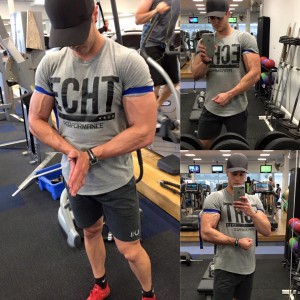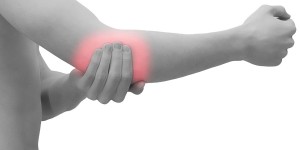So I’m sure by now you’ve seen either me or other people in the fitness industry with these weird things tied around their arms or legs, looking vascular as hell and going HAM in the gym with crazy high reps and low weight.. But why?!
I’m glad you asked!
What is Blood flow restriction training (BFR)?
Blood flow restriction training is a training technique where you restrict the blood flow to the veins, but not the arteries.
Restricting the blood flow through the veins in theory will allow to muscle to fill with blood but won’t allow it to leave (prevents venous blood flow from the muscle). This will causes an increase in swelling of the cells, eventually they will rebuild themselves which leads to muscle growth!
This style of training also leads to the muscle filling with lactic acids which can promote protein synthesis, again… GAINS!
What you’ll need
Tourniquets, light resistance theraband, knee wraps, some form of material that you can wrap around your arm or leg and tighten up.
How do you perform BFR training?
The first step is to get your tourniquets or whatever you are using and to tighten them to tightness of around 7-10 at the top of the limb you are wanting to work.
-This style of training is best performed on either the arms or legs for exercises and variations such as: Bicep curls, tricep presses/extensions, leg extensions, hamstring curls, calf raises etc…
-Place just below the shoulders for your arms
-Place at the top of the quads for your legs or just below the knee cap for calves
Next step is to reduce your working weight to around 20-50% of what you would usually lift.
E.g. If you usually do BB bicep curls at 30kg x 15 reps. You will now need to be lifting around 15kg or lower x 15 reps.
From here you want to perform anywhere from 3-5 sets of the chosen exercise for anywhere from 10-30 reps, putting a big emphasis on the contraction or ‘squeeze’ of every rep.
Rest times between sets should be short to allow the muscle to fill with blood and lactic acid etc which is what we like to call, THE PUMP!
An example of BFR training being performed might look something like this…
Exercise: Cable tricep press
Set 1: 30 reps
Set 2: 15 reps
Set 3: 15 reps
Set 4: 15 reps
*30 seconds between all sets, focusing on the squeeze at the bottom of each rep.
OR
Exercise: Leg extensions
5 x 20 reps with 30 seconds between all sets, focusing on holding the squeeze at the top of each rep for 1-2 seconds.
Who should do it?
-Anyone looking to build lean muscle/in a hypertrophy phase of training
-Someone who is currently lifting heavy loads frequently throughout the week. (E.g. someone who is completing a DUP program or a powerlifter)
-Someone who has experience elbow pain from lifting heavy loads or has tendonitis
-Anyone wanting to reduce joint pain/soreness
Who shouldn’t do it?
Anyone who has or who has had blood pressure problems.
Summary
Give it a go, you won’t know if you like it or not until you give it a try! But do remember that this training technique isn’t there to replace your heavy accessory work all together! It’s simply to be used as a tool and a new intensity technique for you to implement into your training or even substitute in when you have sore joints etc.
I’ve had great results over the past 6 months using this method and I think you can too.
These videos below show how BFR training is used for accessory work in some of my sessions




